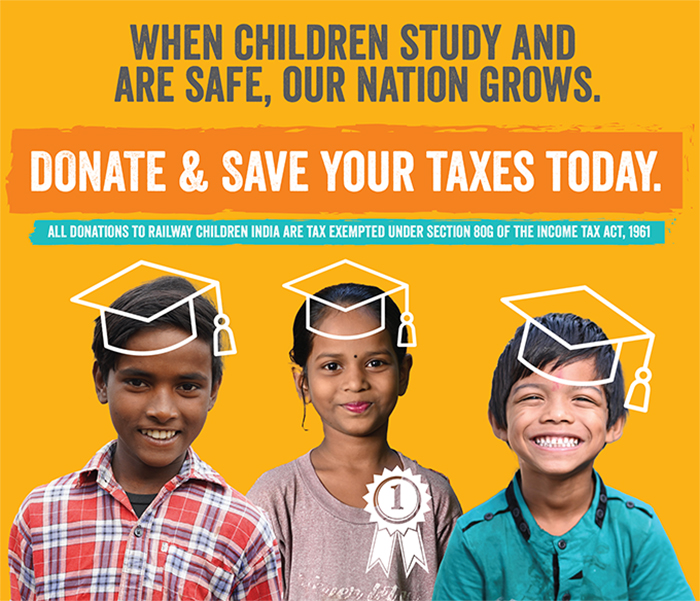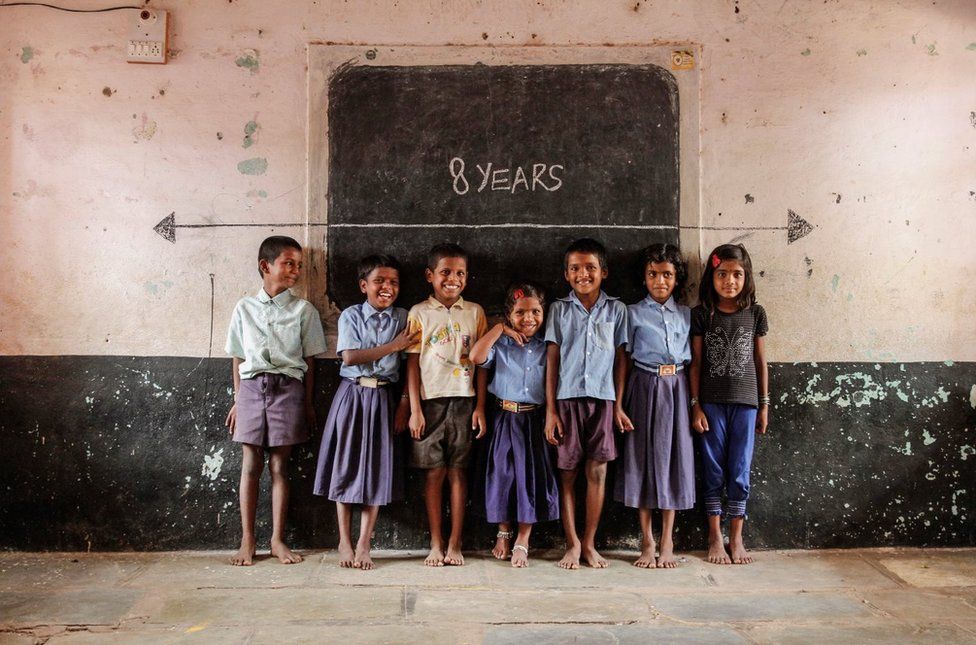Photo – Ronny Sen
The years 2020 and 2021 brought whirlwind changes in every sphere of our lives. From the perspective of child rights, monumental events dominated headlines, most of which were touted as worrisome, progress-reversing statistics. With the worst of the pandemic now behind us, the hopes of millions of parents and children were pinned to 2022. This mixed bag of a year, however, may not have completely lived upto to their expectations. While the year began with the reopening of schools, it was subsequently marred with health emergencies, natural calamities, and a resurgence of violence and crime against children. Let’s recapture the year that went by with these telling headlines that chronicle 2022 for India’s children.
1. Kerala leads the way in overall child well-being, Meghalaya fares the worst
As per the India Child Well-Being Report, Kerala scored 0.89 out of 1, making it the unsurprising leader in child welfare and well-being. The states were evaluated on critical factors such as health, hygiene, protection and school education. These factors covered extensive indicators such as percentage of anemic, stunted and malnourished children, percentage of households with access to toilets, percentage of schools having libraries and playing grounds and the state’s crime rate against children. Close second and third to Kerala, were the northern states of Uttarakhand and Punjab. Apart from Meghalaya, which was the worst-performing state with a score of 0 out of 1, the mammoth states of Bihar and Uttar Pradesh, along with Tripura and Odisha fared poorly. Corroborating the dismal performances of these states are heartbreaking stories and reports of malnourished children and failing health care facilities as repeatedly witnessed here.
2. Maharashtra ranks high in child abductions
According to the latest report released by the National Crime Records Bureau (NCRB), Maharashtra ranks highest in the number of kidnapping cases of children. As many as 3401 girls, aged between 12 and 16, were abducted in the state in 2021. The state recorded a total of 9555 abduction cases, followed closely by Madhya Pradesh and Uttar Pradesh.
3. Crackdown on online child abusers
The pandemic saw an unprecedented spike in online child sexual abuse and exploitation. With the inhumane increase in injustices, social media giants such as Twitter and policy makers of India took multiple measures in tackling the menace. While Twitter banned over 34,000 accounts reported as child abusers, The NCPCR and Ministry of Education took instrumental steps in circulating manuals for school safety and student-friendly handbooks on cyber safety.
4. Delhi government takes laudable steps towards bridging the learning loss
The pandemic enforced an unfortunate learning loss for millions of children across the globe. Even for those children who had access to digital devices, the shift in learning mode wasn’t easy and fruitful for many. Delhi government’s Mission Buniyaad began as a programme aimed at strengthening the foundation of children studying in government schools. In 2022, however, the mission donned a different hat, fueled by the target of closing a two-year learning gap for schoolchildren. Comprising fun activities, the mission helped students improve their numeracy, literacy and more. Similar models were adopted in a host of states such as Karnataka, Gujarat, Madhya Pradesh and Haryana. While such state measures are commendable, school authorities and district-level authorities must also up the ante since the National Achievement Survey hints at a much larger gap.
5. Rolling the ball on conversation about consent
A landmark judgement passed by the Karnataka High Court brought under the spotlight an important conversation about adolescents engaging in consensual acts, but finding themselves embroiled in Protection of Children from Sexual Offences (POCSO) Act, 2012. The act holds the consent of a child immaterial, given their age. However, with growing cases of consensual relations between adolescents, the debate on consent and consensual sex continues.
6. Global Hunger Index 2022 paints a disheartening picture for India’s children
India, with 19.3% of child wasting rate—the highest in the world—ranked a dismal 107 out of 121 in the Global Hunger Index 2022. Trailing behind Pakistan, Bangladesh, Nepal and Sri Lanka, India’s level of hunger has been labelled as ‘serious.’ The report took note of the climate crisis, economic consequences of the pandemic, and the ripple effects of the war between Ukraine and Russia. It also made a note of vital improvements child stunting and child mortality, while highlighting the need for more focused efforts.
7. Health emergencies make a comeback for children
Tomato flu a rare, viral infection became a cause of worry for the Health Ministry with more than 100 children getting infected. Although non-fatal, the virus results in painful red, tomato-like blisters along with other symptoms such as fatigue, nausea, vomiting, diarrhea, fever, dehydration, swelling of joints, and body aches. Monkeypox was yet another epidemic that threatened the well-being of children globally, with governments across the world declaring it a national emergency.
8. Child labour on an unprecedented rise
The trying times of the pandemic saw an unfortunate spike in cases of child labor, with low income families yearning an extra source of income, no matter the means. Come 2022 and the normalcy that it brought along with it, the numbers were expected to dip, but the contrast was disheartening. Across the country, countless incidents of child labourers rescued and exploiters nabbed made an appearance. In the midst of repeated occurrences, the loss of data on child labour stood out as a sore thumb.
9. Climate change threatens the future of India’s vulnerable children
With the COP27 held this year, climate change and its impact on the lives of children was rightly highlighted. One of the strongest voices at the conference was India’s Licypriya Kangujam, who vehemently urged developed economies to compensate for the loss suffered by developing nations. This, followed by the discussion of the “Loss and Damage” fund were touted as concrete steps in the right direction. Yet, in the same breath, the devastating impact of the Assam floods, which entail migration, exposure to trafficking, loss of learning, an array of health hazards, and much more, only hint at the need for focused measures and action.
10. Malnutrition among children remains an untamed giant
One of the gruesome effects of climate change is altered food production. In an agricultural country like India, this impact remains the most worrying of them all. Shocking statistics about stunting, child wasting and child mortality made headlines, but the ground reality remains deeply unchanged. Sure solutions such as food fortification are discussed and implemented, but surprising case studies, such as that of the wealthy Keonjhar district of Orissa serving as a home to malnourished children, shed light on the reality of unequal welfare distribution.
11. Rising crime against children stands as a worrying trend
As a cumulative effect of all the atrocities subjected to the underprivileged, 2022 saw a rise in crimes and violence against children. Many of the aforementioned issues, such as learning loss, disturbed food production, climate change, malnourishment, can be extrapolated to increased exposure of children to crime and criminals. The trafficking of Assam’s flood-affected children, spike in child labor in Maharashtra’s drought-stricken state and increased drug abuse are all interlinked in a vicious cycle that refuses to stop circling.





